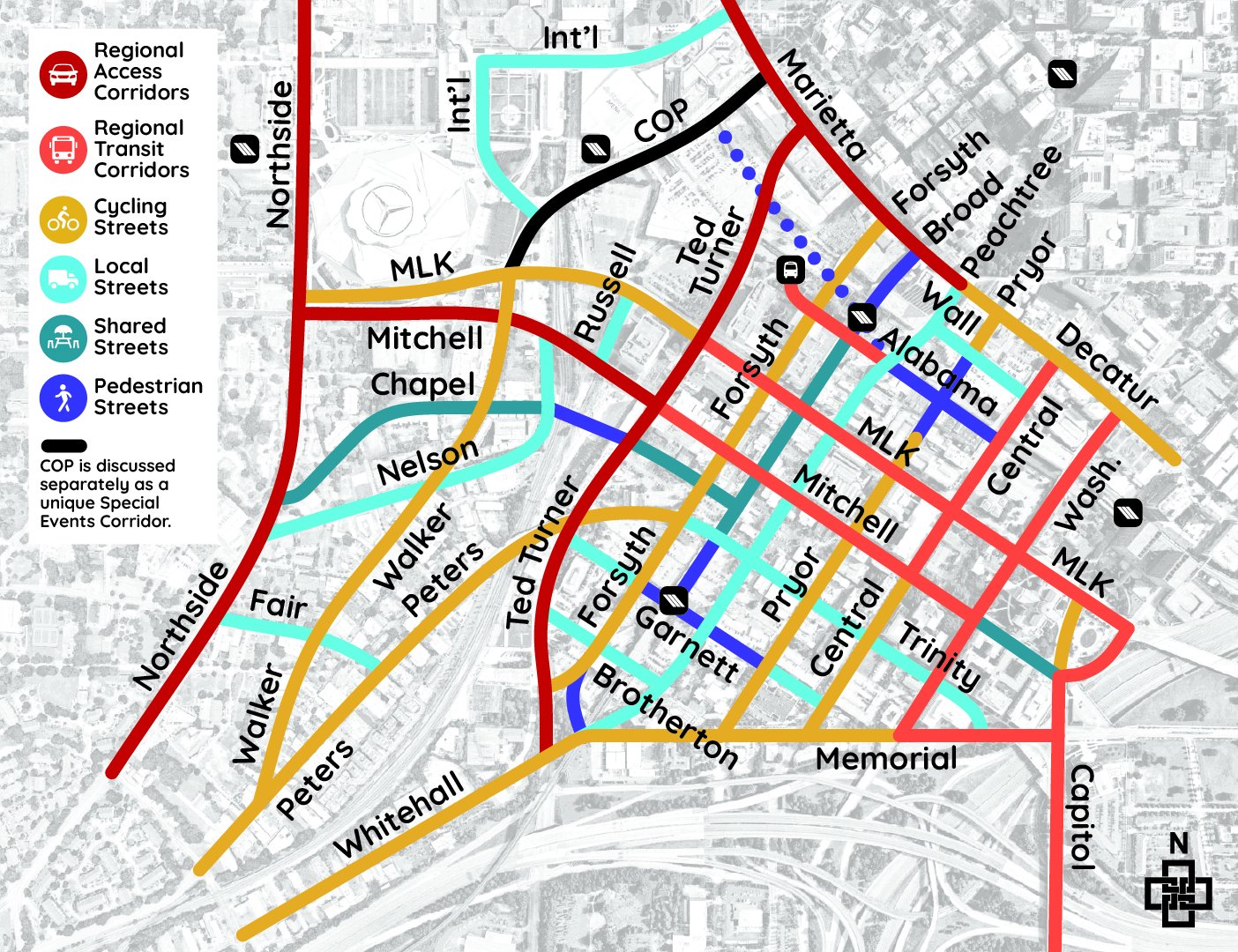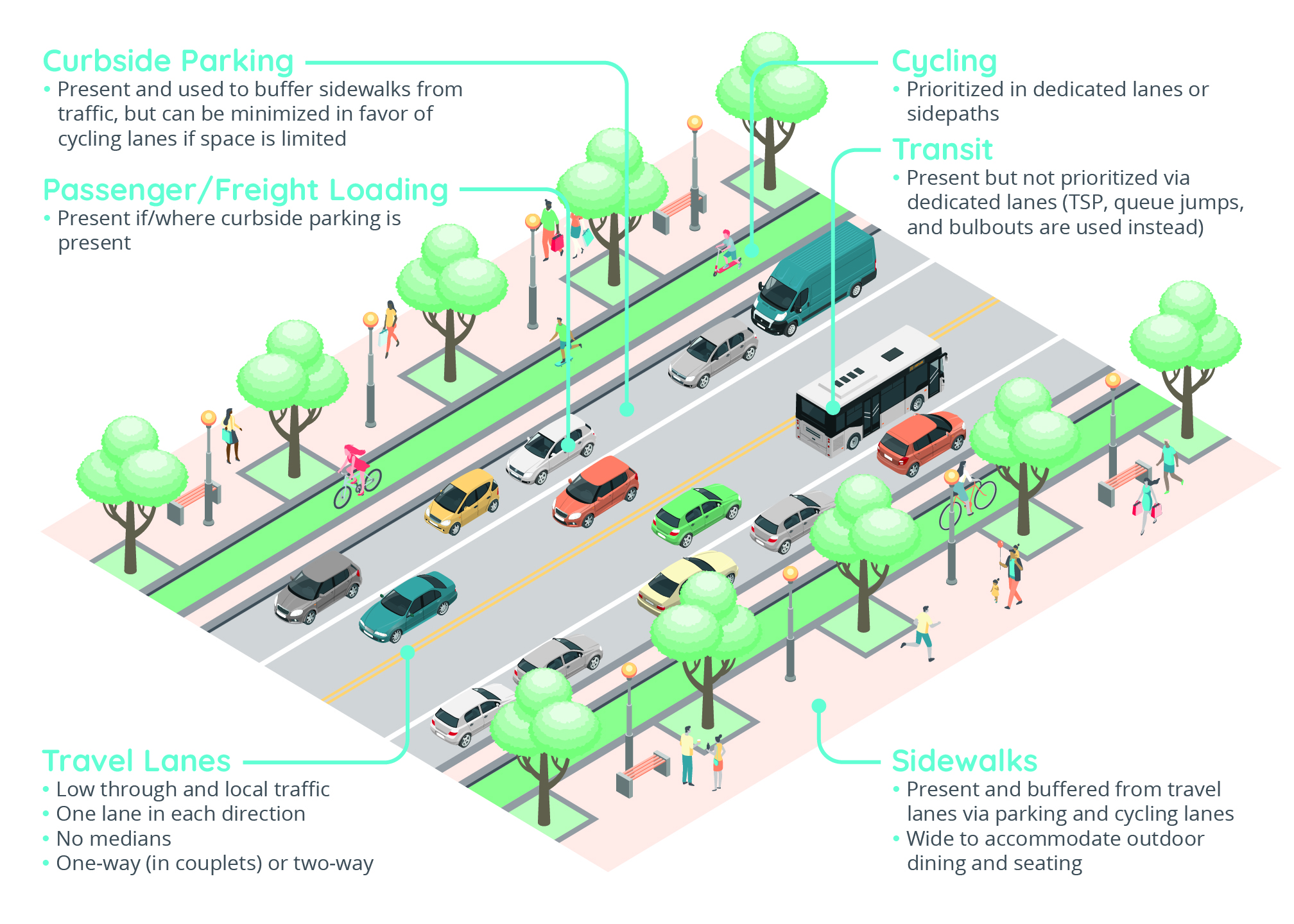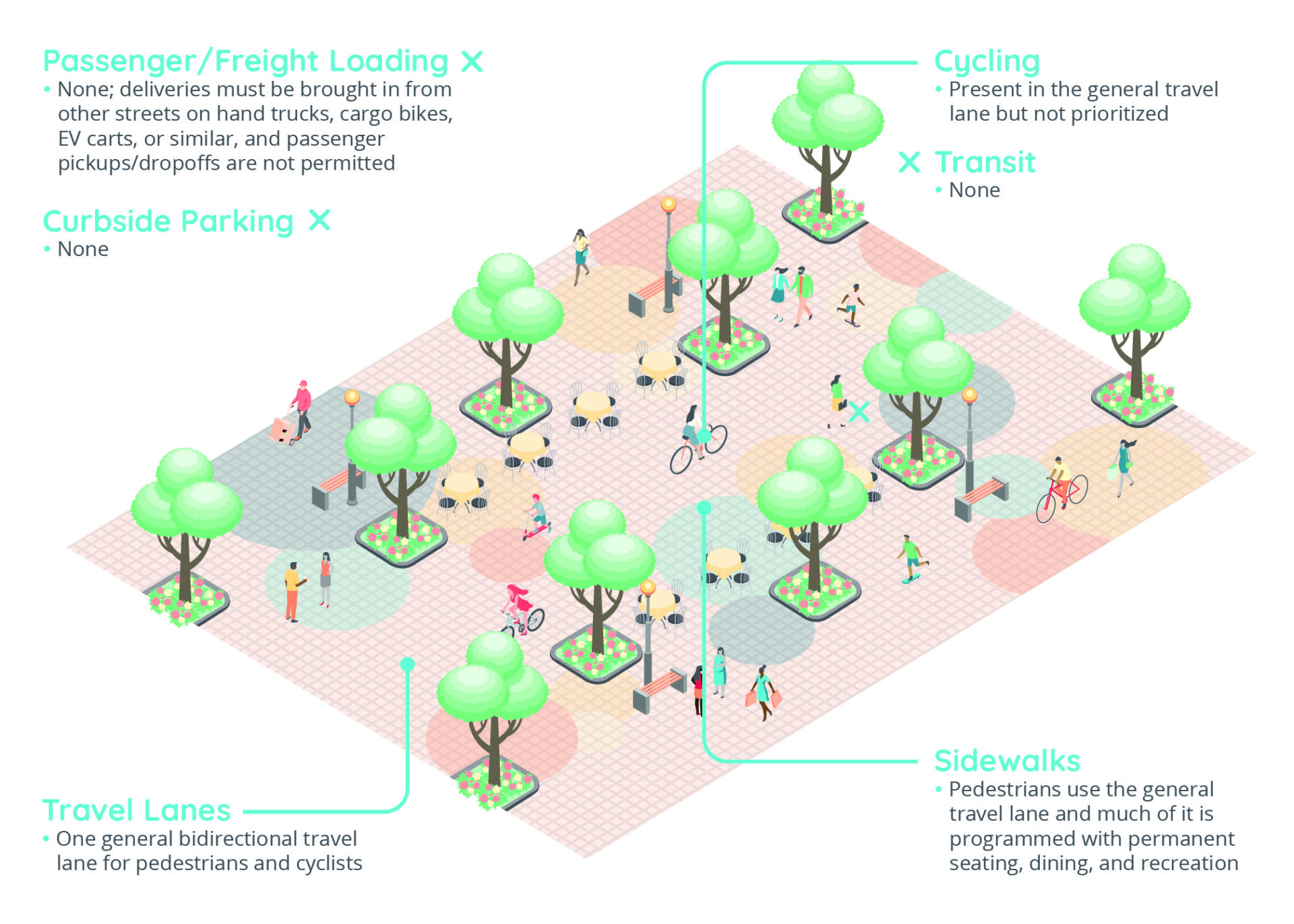The South Downtown Transportation Plan focused on infrastructure investments needed by the growing neighborhood and identified ways to reduce traffic congestion and reliance on automobiles while creating space for increased activity. While there are many existing plans and ad hoc streetscaping projects for the street grid in South Downtown Atlanta, these plans and projects do not necessarily coordinate with each other and often propose conflicting priorities and recommendations. The Foursquare ITP study team put considerable effort into aligning existing plans and projects with each other by proposing new or modified projects to reconcile conflicting priorities and recommendations.
Our team developed a series of street typologies to encourage various stakeholders to debate and resolve the primary and secondary priorities for a corridor. Building upon the street typologies, we recommended a consistent array of curbside uses for all the streets in South Downtown, allowing various stakeholders to agree upon shared curbside activities, such as pickup/dropoff locations, before going deeper into specific projects. Our team proposed roughly thirty new projects to bridge the gaps and conflicts between existing projects and to tie them together into a coherent, mutually supportive network.
Our plan laid the groundwork for a coordinated corridor and streetscape design effort in South Downtown Atlanta going forward. The many high-profile stakeholders in the area, including major event venues, major infill developers, MARTA, and others realized the need and benefit for closer project coordination. The first step in coordinating projects and activities in South Downtown Atlanta will be to implement approximately ten tactical, quick-build projects, ranging from coordination on a special events playbook, to establishing pickup/dropoff locations, to implementing a variety of tactical wayfinding. As of September 2023, CAP has already started this step.



Solutions and Outcomes
- Developed a comprehensive collection of the existing and future conditions about demographic, transportation, and related infrastructure of the neighborhood.
- Created six street typologies to use as templates for redesigning corridors and streetscapes.
- Identified a comprehensive curbside use strategy for all major streets.
- Produced a corridor prioritization methodology.
- Identified approximately thirty new capital projects that bridge the gaps and resolve the conflicts between the existing projects previously proposed for South Downtown Atlanta.